The Arabic letter Sheen (ش) is one of the distinctive letters in the Arabic alphabet. It is identified by the three dots placed above it, making it visually similar to the letter Seen (س), with a slight difference. The shape of the letter Sheen changes depending on its position in the word, which requires a clear understanding of its forms to facilitate reading and writing. In this lesson, we will explore the different shapes of the letter Sheen when it appears at the beginning, middle, and end of words, supported by practical examples and educational activities.
Shapes of the Arabic Letter Sheen (ش)
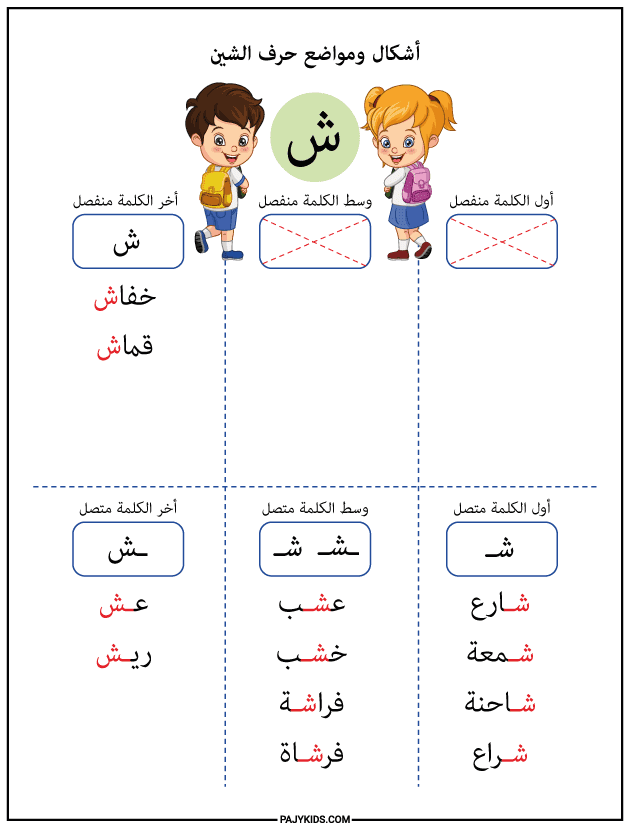
- The Shape of Sheen at the Beginning of a Word
When the letter Sheen appears at the beginning of a word, it connects to the letter that follows and takes the form: شـ.
Examples: Shams (sun), Shajara (tree), Share‘ (street).
This position is one of the fundamental shapes of the letter Sheen that children must master. It marks the starting point in learning to write the letter and associate it with the appropriate phonetic sounds.
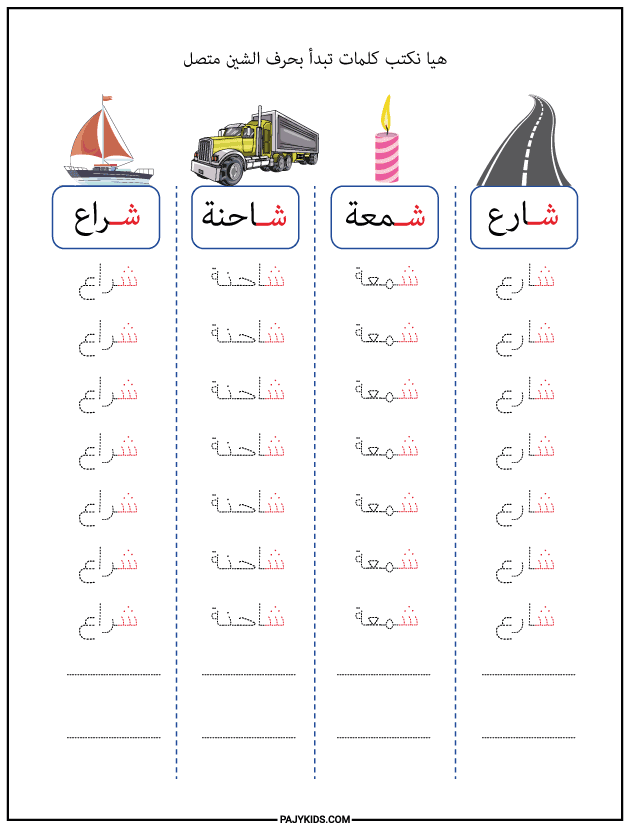
- The Shape of Sheen in the Middle of a Word
If the letter Sheen comes in the middle of a word, it connects to both the preceding and following letters and takes the form: ـشـ.
Examples: Oshb (عشب), Khashab (خشب), Frasha (فراشة).
This position is among the most frequently used shapes of the letter Sheen in Arabic texts. It requires regular visual and written practice to ensure proper recognition and usage.
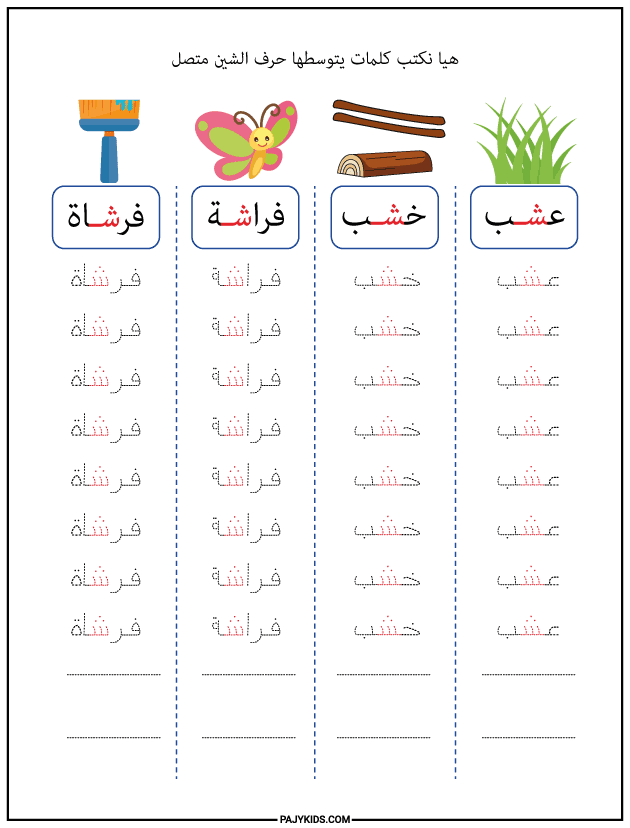
- The Shape of Sheen at the End of a Word – Connected
When Sheen appears at the end of a word and is connected to the letter before it, it takes the form: ـش.
Examples: Osh (عش), Rish (ريش).
This is one of the common shapes of the letter Sheen, often seen in everyday vocabulary. It helps reinforce spelling skills in young learners.
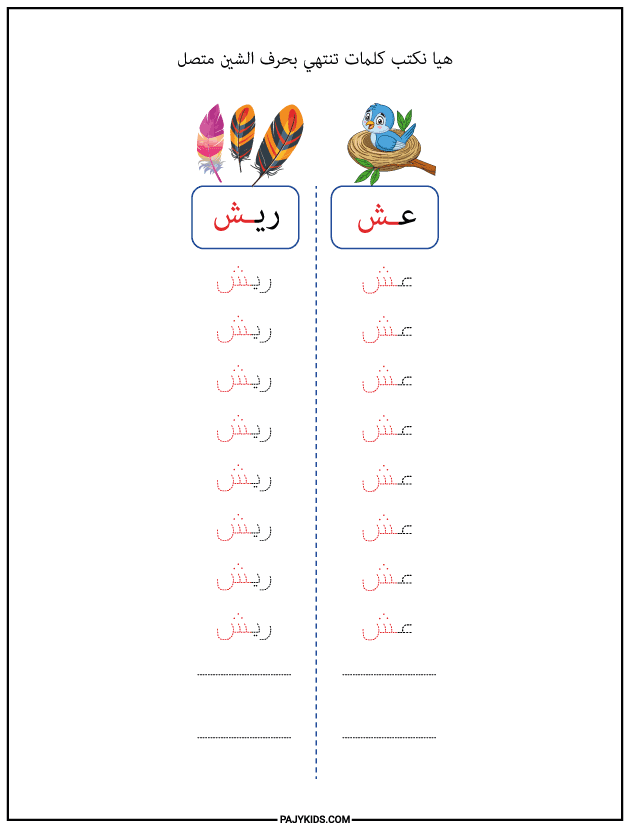
- The Shape of Sheen at the End of a Word – Isolated
If Sheen comes at the end of a word after a letter that does not connect to it, it appears in its isolated form: ش.
Examples: Khofash (خفاش), Qumash (قماش).
This form closely resembles its initial shape and is typically easier for learners to identify and reproduce confidently.
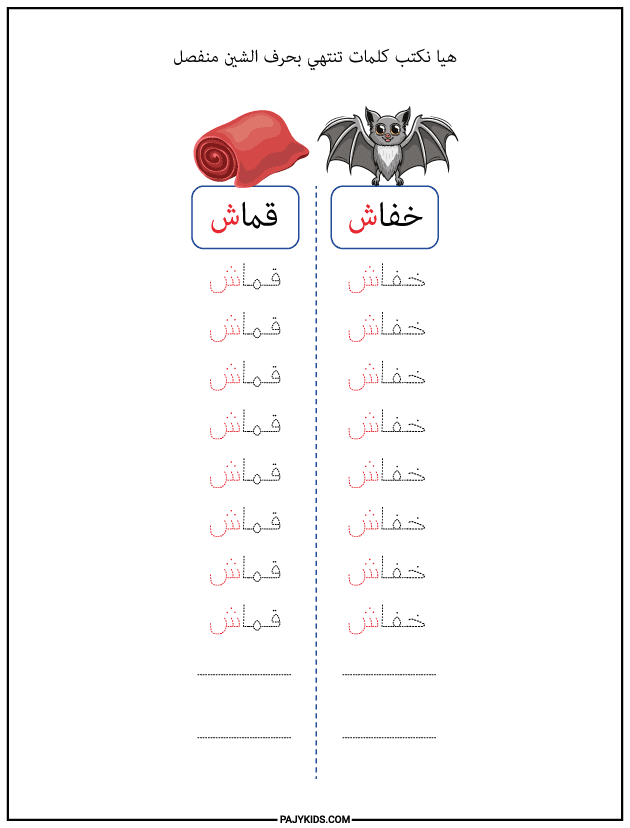
Despite the strong visual resemblance between the letters Sheen (ش) and Seen (س), the key difference lies in the number of dots: Sheen has three dots above, while Seen has none. It is essential to train learners to distinguish between the two, both visually and in writing, in order to develop a precise understanding of the shapes of the letter Sheen and prevent confusion during reading and writing activities.